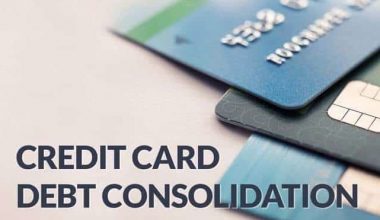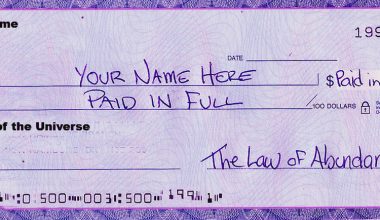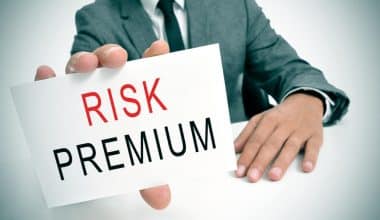This is for you if you’re among the people who still find it challenging to understand the meaning of available credit. This article will shed more light on what available credit on a credit card is and everything you should know, so stay glued!
What Is Available Credit?
Available credit is the amount left over after subtracting the borrower’s accumulated purchases from the entire credit limit.
The account amount of a credit card or other type of debt affects available credit.
The amount of credit still available to a borrower is known as an available credit. It may be determined by deducting all the borrower’s purchases (with any interest) from the account’s overall credit limit.
The maximum amount that can be borrowed is known as the credit limit. A consumer’s total credit limit is often established using information from their credit reports and gross annual income.
What Effect Does Available Credit Have On Your Credit Score?
Having a lot of available credit is generally positive news for several reasons. Firstly, having accessible credit shows that you aren’t using all of your available credit and still have some purchasing power.
Second, the amount of available credit can significantly affect your credit score; therefore, having more available credit is always preferable.
The second most significant element is the ratio of your credit card balances to credit limits, which accounts for 30% of your FICO score.
How To Expand Your Available Credit?
Several options are open to you if you require additional available credit. You can, for instance:
- Request a credit limit increase from your credit card company.
- Get a new credit card by applying.
- Minimize your credit card debt.
The first piece of advice, to request an increase in your credit limit from your card company, can take place on its own. Many card providers will gradually raise your credit limit if you use your card responsibly and establish a solid track record of making on-time payments.
It can also make a credit limit increase request over the phone, and some card issuers even allow you to submit it online.
In either scenario, requesting more credit than you can access may lead to a hard inquiry on your credit report.
Your available credit may rise as you pay off credit card debt, which has further advantages. For instance, paying off debt can free up money you can use for other aspects of your life and can eventually help you avoid paying interest on credit card debt.
Finally, if you want to use more available credit, you may always apply for a new credit card. If you can achieve minimum spending criteria within the first few months of account activation, this method can help you receive a sizable credit card sign-up bonus.
What is Available Credit On a Credit Card?
For people who use credit cards, available credit is the amount that remains after deducting all of your purchases (as well as the interest you paid on those charges) from the total credit limit on your card.
For cardholders, available credit might change: Depending on the borrower’s past purchases and payments, it might rise or fall. A borrower is always free to check the readily available credit.
The borrower must make monthly principal and interest payments for debts, such as credit cards and most other types of debt. Payments made on credit cards (and other revolving credit) go toward expanding the borrower’s credit limit.
A borrower’s available credit will drop when they make purchases on any revolving credit account, including credit cards. On the other hand, their credit line grows when they pay their bills. The monthly addition of accrued interest to the account also reduces a borrower’s available credit.
Every month, borrowers receive a statement that lists all of their transactions, any interest accrued over the previous 30 days, and the total amount of their needed payments. A borrower’s principal, the amount of debt they racked up via purchasing purchases, is included in the payment amount they are expected to make, along with interest.
The amount of interest owed changes depending on the cardholder’s interest terms.
Should You Use All Available Credit?
You shouldn’t utilize the credit on your card just because it is available. There are various advantages to utilizing just a tiny portion of your credit limit.
You can decrease the interest you’ll pay by using less credit, and it also helps you build better credit. How much of your available credit can you still spend if you need to?
It’s necessary to comprehend credit used to determine that. “credit utilization” refers to the ratio or proportion of your entire credit card debt to your total credit line. Reduced credit utilization frequently raises credit scores.
Credit utilization, the second most crucial component in determining your credit score, might lower it if it is regularly high.
For the best credit ratings, experts advise maintaining your credit utilization below 30% of your credit limit and ideally below 10%. In other words, your credit limit should be between 70% and 100% of what you have available.
What Is Available Credit For Cash?
You can utilize the amount on your credit card that is currently available to you for bank cash advance transactions as your cash credit line. You can also call this the available cash credit.
Remember that any bank cash advance transactions you have made should reduce your available cash credit line but have not yet been executed.
What Is Available Credit On Capital One?
The amount you spend on your capital one account is called available credit. It’s often your credit limit, less any outstanding balance on your card. But should you make use of your available credit? You should know how to use available credit and how “accessible” it is.
Credit Limit and Available Credit
Before swiping the card, you should be aware of your credit limit and available credit.
Your credit limit is the most you are permitted to charge on your credit card, and your available credit is the amount that is still available to you after taking into account your outstanding debt.
You can determine your available credit by deducting your current balance from your credit limit.
What Does It Mean When I Have a $300 Available Credit?
If you have a $300 credit limit, your credit card provider will let you use up to $300 at once. Therefore, if you spend $210, you will still have $90 in your account. However, there’s still more!
Even though your credit limit is $300, you can still charge more than $300. You can quickly go over your credit limit on many credit cards. Just be aware that going beyond this will incur extra fees and charges.
Additionally, often going over your credit limit may cause the credit card provider to close your account due to your careless spending practices. Not to mention that your credit score may suffer if the credit card provider reports that your credit limit has been exceeded.
This can damage your credit usage. When using all of your credit cards together, you should try to use no more than 10% of your total available credit. The maximum amount you should use at once is 30% because going above this limit could lower your credit score.
So be cautious when using your card and stay within its credit limit. Dedicate yourself to paying off your total balance in full each month. Any unpaid amount means that you will incur further fees.
How Do I Get My Available Credit To Go Up?
A credit line increase may be possible depending on your particular circumstances. You can do the following things to increase your chances:
·Update your personal and financial information: According to federal regulations, credit card firms must consider an account for a credit limit increase using the most recent income data. Therefore, make sure your account information is current by checking it at least once a year. Your monthly mortgage or rent payment, employment status, and total annual income are all things your lender could be interested in knowing.
· On-time payment of monthly statements: One strategy to enhance your payment history is to make loan payments on time. It’s one sign that you’re managing your credit well.
Available Credit vs. Balance
Your current balance is the sum of all posted transactions as of the previous business day. Your existing balance, or the amount already used, is subtracted from your credit limit. They add unpaid charges that have not yet been posted to determine your available credit.
Before they complete any outstanding transactions, your account’s balance is the total amount in your account. It’s more appropriate to say that you have “available” funds because it represents the amount you have available to spend.
Does Available Credit Mean I Can Spend It?
Yes, the amount you have to spend is known as available credit on a credit card. Most of the time, it’s your credit limit less than any outstanding debt on your card.
What Happens If I Use All My Available Credit?
When you have used all available credit, it maxes the account out, the credit limit has been surpassed, and no more credit is available. Some credit card providers will permit the account balance to exceed the credit limit once the account has hit the limit, while others will refuse any further transaction.
How Much Should You Spend On a $500 Credit Limit?
As a general guideline, you should never use more than 30% of your credit limit. As a result, being perceived as a responsible user will improve your creditworthiness. After keeping it for about six months, you can ask to have your credit limit increased. Depending on their terms and conditions, they might agree.
Available Credit FAQs
How do you request a larger credit limit?
To request a larger credit limit, get in touch with the customer care department of your credit provider.
How much credit do I need to have available to hire a car?
Depending on the provider and the vehicle you are renting, you may need a different amount of available credit. The rental firm typically asks you to have enough credit to pay the rental cost plus an additional sum of around $200 and $500.
Conclusion
The available credit is different from the value balance. I hope you understand the clear difference now.
- HOW TO GET A HIGHER CREDIT LIMIT ON A CREDIT CARD
- HOW TO USE CREDIT CARD TO BUILD CREDIT: Detailed Guide
- IS IT BAD TO CANCEL A CREDIT CARD? What You Should Know.
- HOW TO GET AN 800 CREDIT SCORE: Detailed Guide
- WHAT CREDIT SCORE IS NEEDED TO BUY A CAR: Detailed Guide






